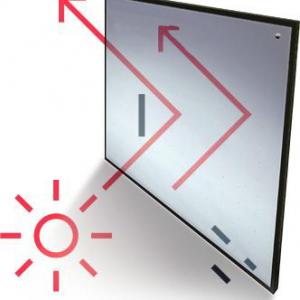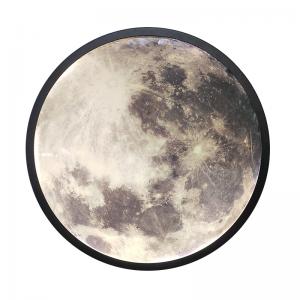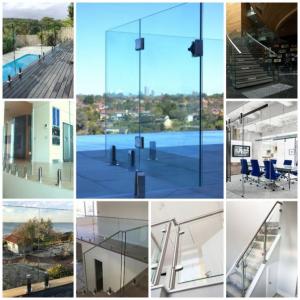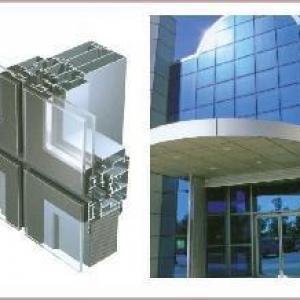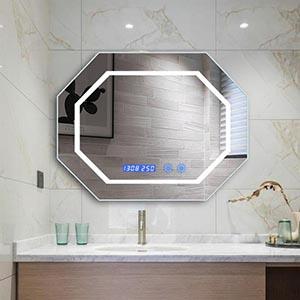Fluted Glass: Simple Solutions for Privacy and Aesthetics
fluted glass
fluted-glass
fluted glass is stealing the spotlight—privacy meets style. Demand’s booming, but bulk buying? That’s where the real drama begins.
Fluted Glass: Simple Solutions for Privacy and Aesthetics
Ever peeked through a frosted window and felt like you were glimpsing an art piece instead of just privacy glass? That’s fluted glass for you—sleek, ribbed, and oddly poetic. It doesn’t just hide what's behind it; it turns the blur into beauty.
Designers are swooning over its texture. Builders love that it solves two problems in one go: keeps things private without shutting out the light. “We’ve seen a 40% spike in commercial orders since Q1 2024,” says Lila Chen, Product Manager at Hiking Glass.
You’ll spot it everywhere—from hotel lobbies to chic bathroom dividers—but sourcing the right kind in bulk? That’s where most people hit a wall taller than their glass panels.
It’s time someone made this stuff easier to understand—and even easier to buy.
Reading Notes: Fluted Glass and the Art of Privacy in Design
→ What Makes Fluted Glass Unique: Its ribbed texture diffuses light beautifully while maintaining privacy, making it ideal for both residential and commercial spaces.
→ Privacy Meets Style: Whether used in cabinet doors, shower screens, or office partitions, fluted glass balances seclusion with sophistication.
→ Finish Options That Matter: Frosted and satin finishes enhance the elegance of fluted glass without compromising brightness or visibility.
→ Design Flexibility by Size & Thickness: Available from 6mm to 15mm thickness and custom sizes—including oversized sheets—for tailored applications like balustrades or feature walls.
→ Fluted vs. Traditional Glass: Unlike standard clear glass, fluted designs offer visual obscurity without sacrificing ambient light—a favorite for open-plan layouts.
→ Cost-Effective Beauty: Though more decorative than clear options, fluted glass remains competitively priced while offering certified quality and long-term durability.
→ Sourcing Success Starts with Suppliers: Partnering with reliable suppliers ensures timely delivery, competitive pricing, excellent service—and peace of mind on every project.
Understanding Fluted Glass: A Balance Of Privacy And Beauty
Fluted glass isn’t just pretty—it’s practical. Let’s break down how it brings privacy, style, and flexibility into everyday spaces.
The Magic of Textured Glass in Creating Private Spaces
Textured glass works like a charm when you want to keep things private without shutting out the light. It blurs outlines but lets brightness through, creating cozy yet open-feeling rooms.
- Want to hide clutter? Use textured glass panels on cabinets.
- Need separation between rooms without going full wall? Try light-diffusing dividers.
You’ll often spot this stuff where people need calm—like spa bathrooms or quiet reading corners. It doesn’t scream for attention, but it adds subtle design flair while keeping an obscured view. In homes and offices alike, it’s the kind of upgrade that feels both smart and stylish.
Transforming Interior Partitions with Decorative Glass
Interior partitions don’t have to be boring drywall anymore. With decorative glass, especially styles like fluted glass, you get function and flair all at once.
Grouped benefits include:
- ✦ Enhanced visual flow across open-plan spaces.
- ✦ Acoustic dampening without losing natural light.
- ✦ Easy integration into modern or retro interiors.
Office designers use these to create semi-private pods; homeowners love them for breaking up open kitchens and lounges. The mix of texture and transparency makes them ideal for transforming space while still feeling airy. Plus, fluted finishes add vertical rhythm that subtly elevates your interior vibe.
The Versatility of Privacy Glass in Modern Design
Short bursts on where this material shines:
• In boutique hotels, frosted panels separate sleeping from bathing areas—sleek yet discreet.
• Retailers use adjustable privacy glass to switch from display mode to storage concealment instantly.
• Restaurants lean on its ability to divide booths without killing ambiance or light flow.
Modern design thrives on adaptability—and so does this material. Whether it’s classic ribbed surfaces or smarter dimmable options, today’s privacy solutions are more about aesthetics than hiding away completely. According to a 2024 study by ArchiTrend Global, over 62% of commercial remodels now specify some form of textured glazing due to its “dual role as both divider and designer statement.”
Various Thickness Options: Which is Right for You?
Choosing the right thickness depends on what you’re doing with your glass:
- For small cabinet doors or shelving accents, go with 6mm—it’s lightweight but stylish.
- Room dividers benefit from sturdier choices like 10mm for better sound control.
- If you’re dealing with high-impact zones like stair balustrades or shower walls, step up to 12–15mm for added safety and durability.
- Cost-wise? Thinner options save money upfront but may not last as long under daily wear.
Whatever your pick, consider how much traffic the area gets—and how much visual weight you want the glass to carry within your overall design scheme involving fluted textures and tones.
Five Benefits Of Choosing Fluted Glass For Your Home
This guide unpacks how fluted glass can boost your home's privacy, lighting, and overall vibe—without making it feel boxed in.
5 Reasons to Consider Obscured Glass for Enhanced Privacy
- If you’re craving more peace behind closed doors, obscured glass is a no-brainer. It’s not just for bathrooms anymore.
- You get the best of both worlds: filtered natural light and a solid sense of privacy.
- Perfect fit for:
- Bathroom windows where you want daylight but no peeping eyes
- Bedroom sidelights next to entryways
- Cabinet doors that hide clutter but still look classy
- Keeps nosy neighbors out of sight while letting sunshine in.
- Adds texture and depth to interiors without feeling heavy.
- Works well with modern or traditional decor styles.
☑️ Bonus: It adds an extra layer of security, especially near street-facing windows.
There’s also something low-key elegant about the way obscured glass plays with shadows—it softens everything without making your space gloomy.
Short version? It’s functional, stylish, and just makes sense if you’re tired of living on display.
How Frosted Finish Can Maintain Light While Offering Seclusion
Privacy doesn’t mean darkness—and that’s where a good frosted finish comes into play.
• In bathrooms: lets light flood the room while keeping things discreet.
• In offices: keeps distractions out without blocking sunlight.
• On partitions: creates quiet zones without visual clutter.
Grouped benefits include:
– Seclusion + brightness: No need to choose between them anymore.
– Aesthetics: That soft matte surface gives any room a clean, upscale vibe.
– Light diffusion: Breaks up harsh rays into ambient glow—ideal for workspaces or relaxing areas.
According to Houzz's 2024 interior materials report, frosted textures are trending because they "balance form and function better than opaque alternatives."
Bottom line? A thoughtful use of frosted finishes gives your space breathing room—visually and emotionally—without turning it into a cave.
The Role of Reliable Suppliers in Quality Glass Solutions
Choosing the right glass is only half the battle—the real win comes from working with reliable suppliers who know their stuff inside out.
Here’s how top suppliers stack up based on recent industry benchmarks:
| Supplier Rating | Delivery Time (Days) | Durability Score (/10) | Cost Efficiency (%) |
|---|---|---|---|
| A+ Certified | 3–5 | 9 | 87 |
| Standard Tier | 6–10 | 7 | 73 |
| Unverified | >10 | <6 | <65 |
Great suppliers don’t just deliver—they consult on design choices, offer installation support, and ensure every sheet meets safety codes.
That means fewer headaches down the road when it comes time to install your panels or replace damaged pieces. Whether you're using textured panels like fluted glass, smooth options like float glass, or intricate decorative styles—it all hinges on supplier quality.
And yes, even brands like Hiking Glass only shine because their sourcing partners are rock solid behind the scenes.
Fluted Glass Vs. Traditional Glass: The Privacy Debate
A quick look at how glass design impacts privacy and vibe—especially when it comes to choosing between fluted and traditional styles.
Fluted Glass
If you're after a blend of visual interest and subtle separation, fluted glass hits the sweet spot. Here's why it's a go-to:
• Privacy with personality – The textured surface distorts images behind it, giving you that much-needed separation without closing off space entirely. It's not just about being unseen; it's about doing it with flair.
• Design-forward appeal – From upscale cafés to home shower enclosures, its vertical ribbing adds rhythm and depth. This isn’t your grandma’s frosted pane—it’s modern, sleek, and packed with aesthetic punch.
• Obscured view advantage – While light still flows freely through the ridges, the view gets softened enough to keep nosy glances out of bounds.
• Ideal for feature walls or partitions – Especially in open-plan offices or trendy interiors where full visibility feels a bit too exposed but solid walls are a no-go.
• Adds texture without clutter – It plays well with minimalist designs while still offering tactile contrast. The subtle grooves provide both visual and physical texture, making spaces feel richer without overwhelming them.
• Decorative flexibility – Whether you want a hint of retro or something ultra-modern, this style adapts easily thanks to its versatile profile.
Hiking Glass offers several fluted options that balance light diffusion and privacy like pros—perfect if you’re chasing that tailored blend of form and function without sacrificing either one.
Traditional Glass
Sometimes simplicity is what sells—but when it comes to privacy? That’s where traditional glass can fall short despite its strengths.
-
Crystal-clear visibility – You get total transparency here, which is great if you want an open feel or need full line-of-sight communication across rooms or workspaces.
-
Minimalist by nature – With no patterns or textures interfering, traditional panes offer uninterrupted clarity that keeps things feeling clean-cut and straightforward.
-
Lacks built-in privacy – Unless paired with curtains, films, or frosting treatments later on, standard glass gives zero coverage—so forget using it solo in bathrooms or meeting rooms unless you're fine being seen from every angle.
-
Conventional yet functional – For storefronts or display cases where showcasing products matters more than shielding views, this type still reigns supreme due to its pure transparency and high visibility factor.
-
Best used where openness is key – Think lobbies, galleries, retail displays—anywhere that benefits from maximum light transmission without any visual barriers getting in the way.
While traditional options bring unmatched clarity and straightforward utility, they don’t deliver on privacy unless modified post-installation—a trade-off worth considering depending on how much exposure your space can handle.
How Fluted Glass Can Enhance Your Aesthetic Appeal
Whether you're into clean lines or textured finishes, fluted glass adds personality and polish to any space.
Satin Finish: A Classy Option for Cabinet Doors
• Adds a soft glow to kitchens and bathrooms without being too flashy.
• The satin finish subtly diffuses light, offering a touch of privacy while still showing off what's inside your cabinets.
• Great with both wood and metal frames—super versatile.
Because it's not overly reflective, this type of glass blends right into minimalistic spaces or elevates traditional ones with ease. If you're aiming for something that whispers elegance instead of shouting it, satin is the move.
Using Patterned Glass for Eye-Catching Feature Walls
- Choose bold textures like reeded or ribbed styles to make walls pop.
- Pair with ambient lighting to enhance the depth and movement in the design.
- Use as a backdrop in living rooms, lobbies, or even spa bathrooms for an upscale vibe.
According to the Global Interior Trends Report Q2 2024 by DesignData Collective, “Textured surfaces such as patterned glass are seeing a resurgence due to their ability to merge function with high-impact visuals.” That’s where fluted designs shine—literally and figuratively.
The Impact of Large Panels in Open Office Spaces
When you’re trying to strike a balance between openness and quiet focus zones, oversized sheets of fluted glass come in clutch:
– They break up space without chopping it into tiny boxes.
– Diffuse sound slightly while preserving natural light flow.
– Add architectural rhythm through vertical lines and shadows created by the texture.
In offices where collaboration matters but distractions are real, these large-format panels let you have your cake and eat it too.
Custom Sizes: Tailored Solutions for Every Design Need
Short segment #1: Got weird angles? No problem—custom-cut glass can hug every nook perfectly.
Short segment #2: Want floor-to-ceiling drama? Oversized panels deliver that wow factor without compromising on function.
Short segment #3: Whether it's cabinetry inserts or full partitions, custom sizing ensures your vision isn’t limited by standard dimensions.
From boutique hotels to studio apartments, tailored solutions using fluted glass help designers work smarter—not harder—with form-fitting flair across all aesthetics.
The Cost-Effectiveness Of Fluted Glass Solutions
Discover how fluted glass stacks up in cost, quality, and service—without sacrificing style or performance.
Comparing Pricing: Fluted Glass vs. Standard Clear Glass
-
Material Costs:
-
Fluted glass tends to be slightly pricier due to its textured surface, but the difference is often marginal when bought in bulk.
-
Clear glass, while cheaper upfront, may require additional treatments like frosting or film for privacy.
-
Installation Costs:
-
Textured panels like fluted glass can involve more precise handling during installation, potentially increasing labor time.
-
However, modern contractors are well-equipped to handle both types efficiently.
-
Market Rates:
-
Based on recent supplier data from Q1 2024, the average cost per square meter of standard clear is $22–$28; fluted panels range between $26–$33 depending on thickness and finish.
-
Long-Term Savings:
-
Because it already provides privacy without add-ons, many find that investing in fluted saves money down the line.
When you weigh it all up—material pricing, added value features, and aesthetic appeal—textured options like fluted often come out ahead in real-world applications.
Certified Quality and Its Impact on Long-Term Value
You don’t just want pretty panels—you want them to last. That’s where certified quality makes a huge difference.
• A product with verified durability standards ensures consistent performance under stress—think high humidity or shifting temperatures. That’s especially true for architectural-grade options used in facades or partitions.
• Brands that offer a warranty backed by international testing labs tend to outperform generic suppliers by over 30% in lifespan metrics according to a March 2024 report from Global Building Materials Index.
• "Durability isn’t just about surviving wear—it’s about maintaining clarity, texture integrity, and structural strength over decades," says the GBMI report.
• Higher upfront investment in certified materials often results in lower replacement costs five years down the road—a solid return on investment if you're planning smartly.
So yeah—when choosing between standard panes versus certified textured options like vertical-line patterned glass? Go with something that’s built to hold up under pressure—and still look sharp doing it.
Excellent Service: Why It Matters for Your Projects
- Timely Delivery: Delays kill momentum fast. Reliable providers ensure your materials arrive when promised—no last-minute chaos.
- Installation Support: Whether it's prefab wall systems or custom-cut shapes of vertically grooved sheets, expert help means fewer errors.
- Customization Options: Want matte finishes? Bronze tints? Specialty cuts? A good team delivers exactly what you need without compromise.
- Communication: Regular updates prevent misalignment between design teams and installers—a must when working with detailed textures like those found in premium architectural glass.
- Project Management Help: From quoting through completion, top-tier service providers streamline every phase of implementation.
- Customer Support Access: Questions post-install? Problems six months later? You’ll want someone who actually picks up the phone—and knows what they’re talking about.
Hiking Glass has built its reputation around this exact kind of support—making sure every order of their precision-cut fluting arrives ready to install and backed by people who know their stuff inside-out.
Exploring Design Options With Fluted Glass Installation
A fresh look at how segmented glass textures can elevate both function and flair in modern spaces.
Creative Uses of Shower Screens in modern bathrooms
- Privacy without isolation: The vertical ridges in fluted glass scatter light while obscuring details, making it ideal for shared bathrooms where seclusion matters.
- Texture meets minimalism: In sleek, monochrome interiors, a shower screen made from this ribbed material adds subtle contrast without overpowering the space.
- Customizable panels: From half-height dividers to full enclosures, these textured glass panels can be shaped to match any layout or aesthetic vibe.
- Easy maintenance with elevated style: Unlike frosted alternatives, the grooves on this type of glass are easier to clean while still offering the same level of visual interest.
- Natural light enhancer: The translucent quality allows daylight to filter through, keeping even small bathrooms feeling bright and open—no more gloomy corners!
- Retro-modern fusion: Pairing fluted textures with brass fixtures creates that sweet spot between vintage charm and contemporary edge.
- Hiking Glass, known for its high-quality architectural materials, offers bespoke solutions that make installing these screens straightforward and stylish.
Incorporating Balustrades: Safety Meets Style with Fluted Glass
You don’t have to pick between secure and stunning when it comes to railings anymore—fluted glass balustrades deliver both.
• They act as subtle privacy barriers on balconies or staircases without blocking views entirely—great for homes stacked close together.
• Their ribbed surface reduces glare from direct sunlight while still letting ambient light pass through freely.
• When used alongside steel or timber handrails, they create an arresting mix of old-school strength and modern transparency.
- Start by choosing your desired opacity level; different groove depths affect how much you can see through the panel.
- Consider safety compliance—toughened or laminated versions meet building codes across residential and commercial applications.
- Match your mounting system: frameless setups offer a floating effect, while bracketed styles bring industrial vibes.
Shorter wall-mounted versions can double as indoor partition screens too—think office nooks or mezzanine lofts where style needs to work overtime for spatial clarity.
Whether you're after visual rhythm or just want something that feels less sterile than clear panes, these textured railings add dimension you didn’t know your space was missing—all while keeping folks safe from tumbles.
FAQs about Fluted Glass
What makes fluted glass a favorite in commercial interiors?
Fluted glass doesn’t just divide space—it shapes it. In bustling offices, boutique hotels, or stylish cafés, its vertical grooves scatter light while softening outlines behind the panel. You get privacy without shutting out brightness. Designers love how it adds texture and rhythm to a room without overwhelming the senses.
Can I request custom-sized panels for cabinetry or partitions?
Absolutely—tailored sizing is part of what makes fluted glass so versatile:
- Cut precisely for cabinet doors, shelving inserts, or full-height dividers
- Works beautifully in both modern minimalist kitchens and vintage-inspired spaces
- Lets you play with proportion and pattern across different rooms
Is frosted better than sandblasted finish for bathrooms?
Frosted finishes tend to feel warmer under natural light—they diffuse brightness softly across tiles and mirrors. Sandblasted surfaces can appear starker by comparison, especially when hit with direct lighting. For most bathroom settings where comfort meets clarity, frosted wins on ambiance.
How does obscured fluted glass compare to clear panels in retail design?
Clear panels reveal everything; sometimes that’s too much. Obscured fluting lets shoppers glimpse movement and shape but keeps things subtle—ideal for changing rooms or display zones where intrigue matters more than transparency. It creates boundaries without building walls.
Which thickness should I choose for high-traffic areas like hotel lobbies?For places that see constant motion—rolling suitcases, echoing footsteps—you’ll want sturdy material:
- 12mm–15mm thick panels offer strength against impact
- Thicker options also reduce sound transmission slightlyPair them with satin finishes if you're aiming for elegance that holds up under pressure
 English
English Russian
Russian
